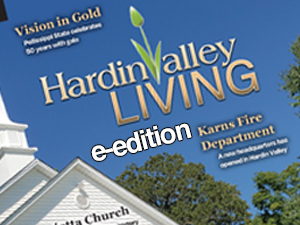New state law: Neal warns BOMA about greenway
The following is a letter Knoxville attorney John M. Neal shared with farragutpress early this week that he sent to each Farragut Board of Mayor and Aldermen representative concerning the Town’s proposed Turkey Creek Greenway Extension, partial funding of which is included in BOMA’s proposed Fiscal Year 2025 budget.
Neal represents four clients (three households) living along Turkey Creek Road who are opposed to the path of this extension through their properties.
The FY ’25 budget is scheduled for its second and final reading, and possible approval, during BOMA’s Thursday, June 13, meeting:
• As all of you know, I represent four of the landowners who would be affected by the proposed Turkey Creek Greenway Extension: Shirley Harkins, David Galbraith and Howard and Bobbie Tipton. My clients all adamantly oppose the taking of their property for a greenway extension.
I understand that the Board of Mayor and Aldermen is about to give the new budget final approval. It includes $500,000 for acquisition of the property, which would be used for this greenway extension. It would, of course, take sizeable portions of my clients’ yards. For the reasons discussed below, you are prohibited from building the greenway extension and the budget should not include any funds for acquisition.
First, I am attaching a copy of State of Tennessee Senate Bill (No.) 1984, which has just been passed and was signed by Gov. (Bill) Lee on May 28, 2024. The statute is so new that it does not yet have a T.C.A. number. This new statute deletes TCA 29-17-102(2), which discusses the power of the government to exercise eminent domain for a public use and substitutes a new section, which states that:
“’Public use’ does not include recreational facilities, recreational purposes or parks. .... except as follows. ... (A)The acquisition of any interest in land necessary for a road, highway, bridge or other structure, facility or project used for public transportation.”
Thus, this new statute prohibits the use of eminent domain to condemn private property for the use of recreational facilities and parks.
You may well look at this statute and say it does not apply because a greenway is “necessary for public transportation.” However, that would be a misplaced hope. In effect, you would be saying that Lakeshore is not a park because it has trails the public uses for transportation.
In State v. Langley, a 2020 decision by the Criminal Court of Appeals, the court favorably quoted an expert’s testimony given in an earlier, and apparently unreported, bench trial:
“At the Shaffer bench trial, the State offered testimony from Terry Napier, the Director of Parks and Recreation for the City of Bristol located in Sullivan County. According to Mr. Napier, when the Mark Vance Memorial Greenway ... was originally created, it was likely referred to as a linear park.
Mr. Napier explained:
“The term ‘greenway’ is probably a little newer. Past references, it would be referred to as a linear park. ... A linear park. In other words, being a park that stretched out from Point A to Point B versus the typical rectangular, you know, park that you may have in the community. ... Mr. Napier further defined a greenway as a ‘recreational area of length and typically connecting two points’.
“In conclusion, the Court of Appeals stated, “Upon our review, we conclude a greenway does constitute a public park. ....”
Put in the context of the Turkey Creek Greenway, the greenway is a park, not a project for public transportation, and condemnation is prohibited.
Furthermore, another new statute in Title 29, Chapter 17, which is also so new that it does not have a section number (copy attached for BOMA reps) provides that a landowner has a private cause of action to challenge a proposed condemnation. In pertinent part the statue states:
“When a condemner approves the use of eminent domain, the property owner has a right to have a court of competent jurisdiction determine if the taking is necessary to accomplish the public use. ...”
In other words, the legislature has changed the old process whereby a municipality could simply seize land and litigate about its value. The municipality must now justify its conduct before condemnation if the owner wishes to litigate.
It should be obvious by now that my clients are willing and able to litigate. We believe approval of the funds for land condemnation will trigger the homeowners’ right to sue; but at a bare minimum I believe I can guarantee they will be filing suit before you actually get the opportunity to try and seize their property.
Finally, I direct your attention to T.C.A. 29-17-101, which states, “It is the intent of the General Assembly that the power of eminent domain shall be used sparingly, and that laws permitting the use of eminent domain shall be narrowly construed so as not to enlarge, by inference or inadvertently, the power of eminent domain.”
I strongly suggest that this is not a fight you want. The costs of litigation will be high and the legislature has made it clear that your chances of success are virtually non-existent. I urge you to abandon this project and save the Town of Farragut the expense of a hopeless lawsuit.
I could not locate e-mail addresses for the members of the (Farragut Municipal) Planning Commission. I would be grateful if Mr. (Mark) Shipley (Town’s Community Development director) would send them copies of this letter.
Editor’s Note: we welcome a response from either a representative of Farragut Board of Mayor and Aldermen — including Mayor Ron Williams and/or Vice Mayor Louise Povlin — or from a legal representative BOMA may retain or have retained in the matter.
Town attorney Tom Hale reportedly has recused himself from this case due to a potential conflict of interest.


